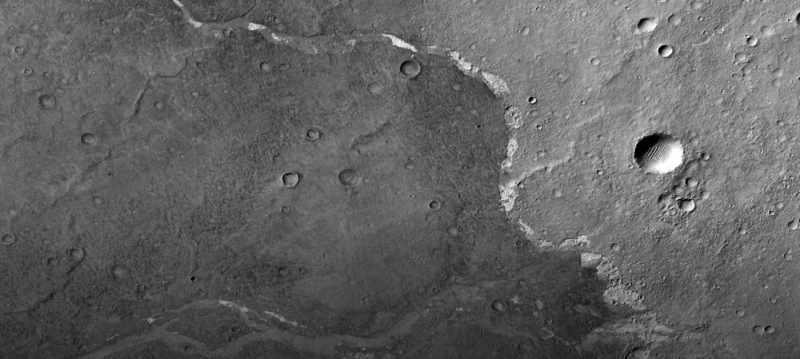
By now, there's plenty of evidence that Mars had a watery past, and more data is coming in all the time. But that evidence doesn't necessarily give us a complete picture of Mars' past. Was the red planet covered in watery oceans, or was most of the water trapped as ice, with erratic seasonal melting?
This week, two researchers at Caltech—Ellen Leask and Bethany Ehlmann—helped provide a clearer picture of Mars' past by figuring out the likely behavior of the last liquid water on Mars and determining when it stopped flowing. Their secret was tracing salt deposits on the Martian surface.
Follow the salt
There are many different salts we've detected on the Martian surface, but the ones of interest here are chlorides (which probably include the sodium chloride of table salt). These are especially informative because they are the salts most readily soluble in water. So if there's any water around, these chloride salts would be dissolved in it. Any deposits of these salts currently present on the surface of Mars, then, were put there as the last water in that region of the planet dried out.
Fortunately, detecting chlorides from orbit is not very challenging. They have a distinct spectral signature that is only shared by a couple of other chemicals (including diamonds) that are unlikely to be found in significant amounts on Mars' surface. So, armed with data from the Mars Reconnaissance Orbiter, the researchers mapped the presence of chloride deposits across the entire Martian surface.
Analyzing these deposits gave the researchers a number of data points about the water that put them there.
For starters, you might expect that the planet's last liquid water would have gathered at the bottom of basins as they gradually dried out. But that's not the pattern seen here. Instead, many were in relatively narrow channels, and the elevation of the deposits was often higher than nearby basins. To Leask and Ehlmann, this suggested that the water had flowed into channels but dried up before reaching the basins they filled. The idea was supported by the fact that the outlet channels from these basins didn't have salt deposits present.
Another factor the researchers determined is that these deposits were relatively thin. While it's difficult to get an exact depth from orbit, in a few instances, the team could estimate where impact craters disrupted the chloride deposit. These findings consistently indicated that the salt deposits were shallow—less than three meters deep. While that still represents a lot of cycles of water flowing in and drying out, Mars clearly doesn't need the long-term water occupancy that builds thick salt deposits on Earth.
When 2 billion is “recent”
Finally, the researchers looked at the age of the salt deposits. Typically, this is done by checking the number of craters in the deposit and assuming that the craters have been made at a regular rate over the past few billion years. But most of the salt deposits occurred in narrow channels, so there aren't many large surfaces to build up a useful crater count.
Instead, the researchers mostly focused on the dates of underlying rock deposits, which provide a maximum age for the salt deposited on top of them. In one case, the team found a salt deposit that was on top of a 3.3-billion-year-old rock, which was altered by an event that was dated to two billion years ago. In another case, salt deposits were on top of volcanic deposits dated to 2.3 billion years ago.
That's much more recent than many previous estimates of when Mars went too cold and lost too much atmosphere to allow liquid water.
That said, Leask and Ehlmann don't think these deposits represent a permanent presence of water. Instead, they suggest that the water showed up in these channels due to seasonal melting of local ice deposits and may not have even entered the nearby basins in significant amounts. They also note that the region where most of the salt deposits are located overlaps with where climate models predict we would see the most precipitation when Mars had a water cycle, so there's good reason to think there should be major ice deposits in the area.
No single analysis will present a complete history of Mars' watery past. But individual findings can give us a glimpse of different eras, providing puzzle pieces that we can eventually put together to form a bigger picture.
AGU Advances, 2022. DOI: 10.1029/2021AV000534 (About DOIs).
The last of Mars’ liquid waters flowed about 2 billion years ago
- vitorio and DKT27
-

 2
2


3175x175(CURRENT).thumb.jpg.b05acc060982b36f5891ba728e6d953c.jpg)
Recommended Comments
There are no comments to display.
Join the conversation
You can post now and register later. If you have an account, sign in now to post with your account.
Note: Your post will require moderator approval before it will be visible.